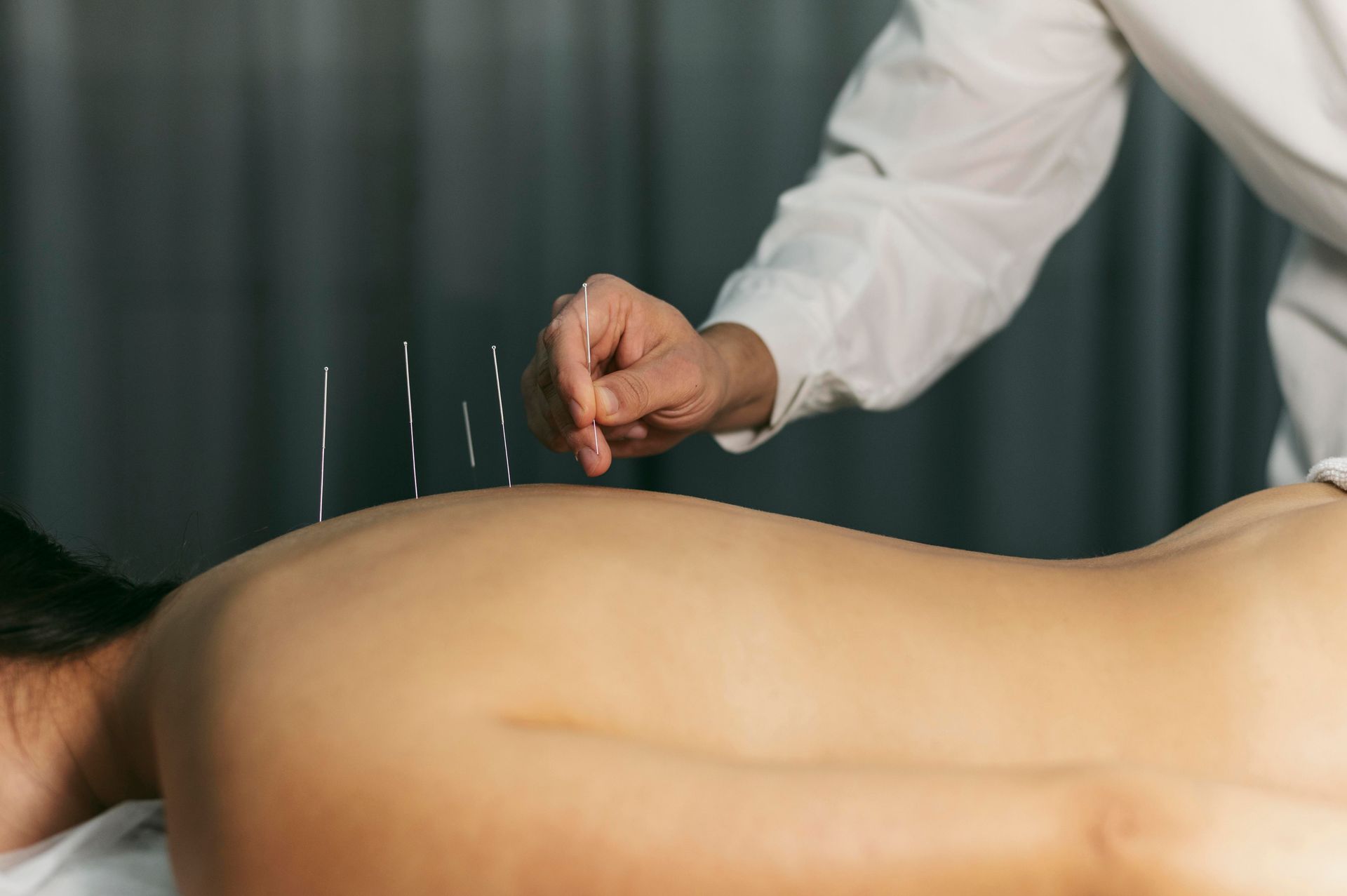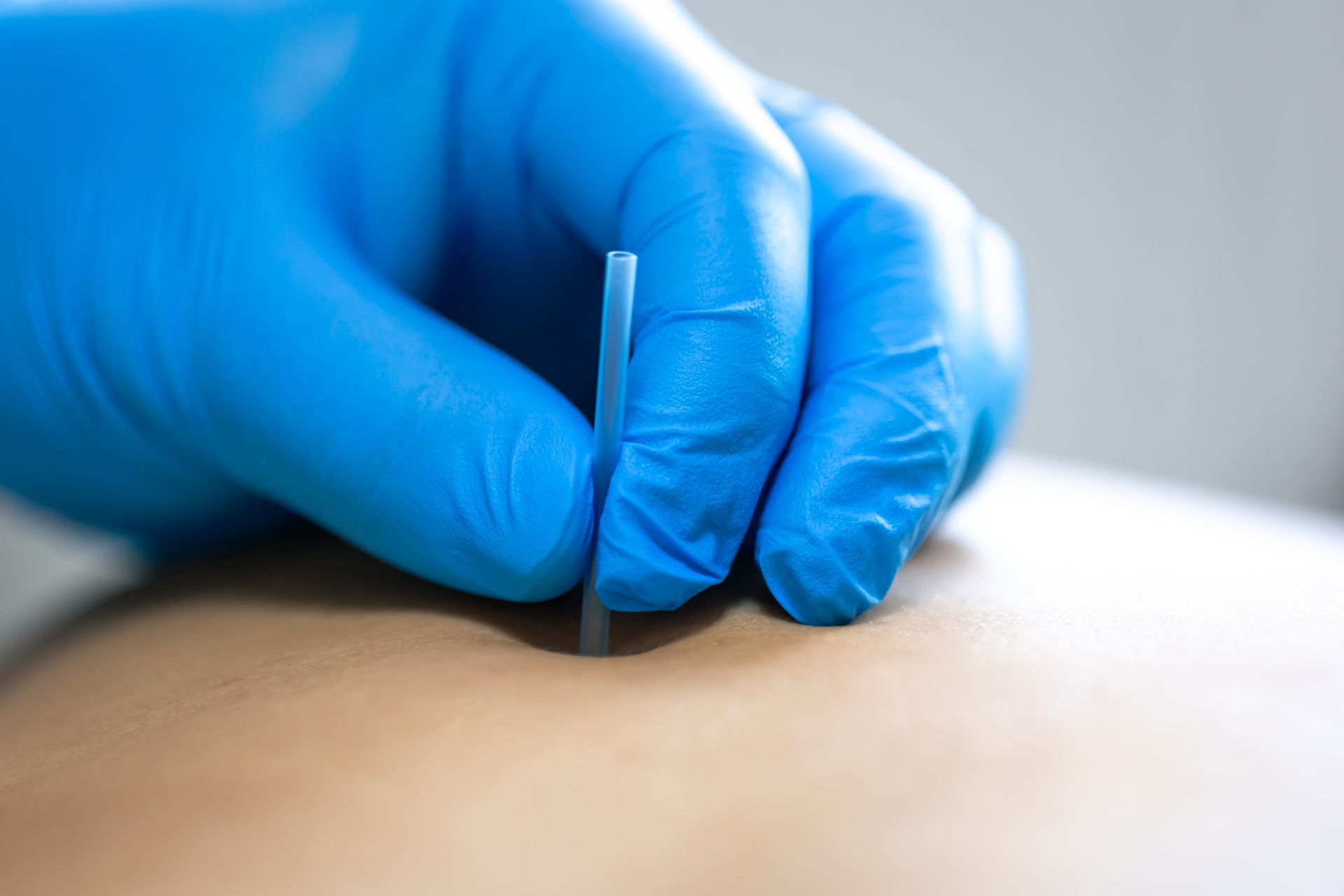Dry Needling vs. Acupuncture: What's the Difference?
By Dr. Jared Croskey • October 15, 2025

Trying to decide between two needle-based therapies for your muscle aches and pains?
Understanding the differences between dry needling and acupuncture can help active individuals like you pinpoint the best approach, whether you're looking for targeted muscle relief or a more holistic energy balance.
This guide breaks down what dry needling is and how it works, what acupuncture involves, the key distinctions between them, and why we at Empower Sports Chiropractic lean towards
dry needling Cumming GA athletes trust for efficient recovery.
Your Guide to Understanding Dry Needling vs Acupuncture
- Dry needling targets trigger points to release tension and restore motion fast
- Acupuncture uses meridian points to balance Qi and support overall well-being
- Choose dry needling for focused, evidence-based relief of sports or overuse injuries
- Pairing dry needling with chiropractic care and exercise speeds functional recovery
- Acupuncture may fit stress, headaches, or chronic pain when a holistic approach is desired
What Exactly Is Dry Needling and How Does It Work?
Dry needling is a precise, evidence-based procedure where thin, sterile needles are inserted directly into myofascial trigger points (those tight knots in your muscles).
The goal? To release muscle tension, boost your flexibility, and significantly reduce pain.
When the needle hits a trigger point, it often causes a local twitch response, which helps your body release natural pain-relieving endorphins and increases blood flow to the affected muscle fibers.
For instance, targeting a stubborn knot in your shoulder with dry needling can dramatically improve your range of motion and speed up recovery after a sports injury.
Is Dry Needling Applied by Physical Therapists Effective for Pain in Musculoskeletal Conditions?
A
comprehensive meta-analysis concluded that dry needling, when performed by physical therapists, demonstrated significant effectiveness in reducing musculoskeletal pain.
What Is Acupuncture and How Is It Performed?
Acupuncture, an ancient practice rooted in Traditional Chinese Medicine (TCM), involves inserting very fine needles into specific points, known as acupoints, located along the body's energy pathways called meridians.
The aim is to restore the flow of vital energy, or Qi, promoting circulation and supporting overall well-being. This therapy works by influencing the nervous system and encouraging the release of endorphins, which can help ease chronic pain and reduce stress.
For example, placing needles along the gallbladder meridian near the ear might help alleviate migraine symptoms and bring your body back into balance.
Key Differences Between Dry Needling and Acupuncture
Here’s a straightforward comparison of the core aspects that highlight how dry needling and acupuncture diverge in their origins, techniques, and applications.
| Aspect | Dry Needling | Acupuncture |
|---|---|---|
| Origin | Modern Western medicine, grounded in anatomy and physiology | Traditional Chinese Medicine, based on the concept of Qi flow |
| Target | Myofascial trigger points within muscle tissue | Specific acupoints along defined meridian pathways |
| Technique | Insertion into the muscle to elicit a twitch response for local release | Insertion along meridians to influence energy flow and systemic balance |
| Practitioner | Licensed professionals, like physical therapists or chiropractors trained in dry needling | Licensed acupuncturists with extensive training in TCM principles |
| Primary Application | Targeted relief of localized musculoskeletal pain and sports injury recovery | Holistic pain management, stress reduction, and overall wellness enhancement |
Why Empower Sports Chiropractic Recommends Dry Needling for Athletes
At Empower Sports Chiropractic, we recommend dry needling because it’s an evidence-based approach that precisely targets muscular dysfunction, complements chiropractic adjustments beautifully, and significantly speeds up functional recovery for athletes.
Here’s why it’s a game-changer:
- Dry needling directly releases tension in trigger points, leading to improved flexibility and reduced muscle pain, often within a single session.
- This technique enhances local blood flow and stimulates your body’s natural endorphin production, promoting faster tissue healing and reducing inflammation which is crucial for active individuals.
- Our certified practitioners expertly integrate dry needling with other manual therapies and personalized exercise programs, creating a comprehensive treatment plan designed to boost your long-term performance.
These targeted benefits make dry needling our go-to for optimizing athletic performance and minimizing recovery time.
Conclusion
Ultimately, the choice between dry needling and acupuncture hinges on whether you're seeking a focused, Western medicine approach to specific muscle pain or a more holistic, energy-balancing therapy.
Dry needling excels at releasing tight muscle fibers and restoring movement, while acupuncture focuses on harmonizing your body's overall energy and promoting general well-being.
Here at Empower Sports Chiropractic, our specialized training in dry needling and our integrated care model provide precise relief for sports injuries and chronic muscle tightness.
If you’re looking for dry needling in Cumming, book a consultation today to see how this technique can help you reach your performance goals and get back in the game faster.
Get Back in the Game, Pain-Free
Recover faster and move better with expert sports chiropractic care.
Pro Tips for Athletes & Active Lifestyles
Stay ahead with chiropractic insights, recovery strategies, and performance hacks.
Contact Us
We will get back to you as soon as possible.
Please try again later.
SHARE THIS
Latest Posts
